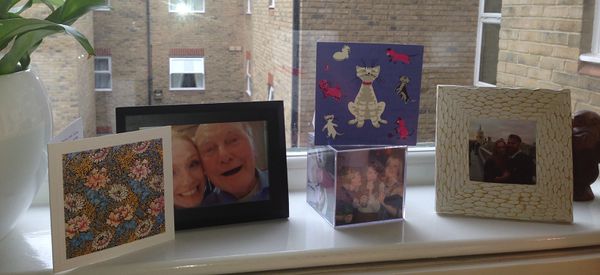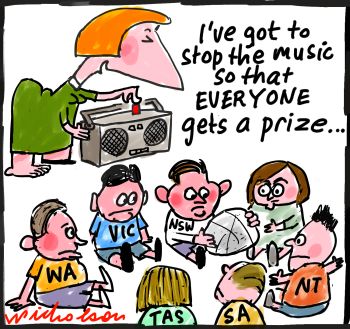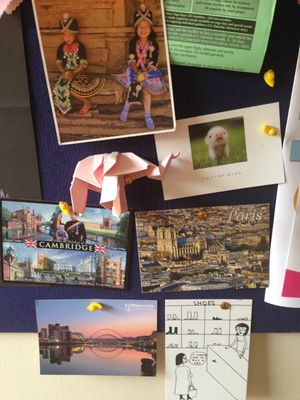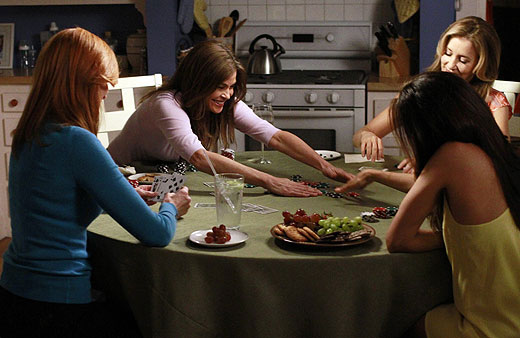Exchanges
Contents
[hide]
The general negative perception of Crowd Funding focuses on the inequality of exchange; at best viewing it as charity without a charitable enough cause, and at worst a ‘high-brow form of begging’ (Jane Moore, 2015). My own assessment, prior to researching this emerging sector within the arts, was highly cynical and largely hinged on the apparent inequality of exchange, and the long term limitation of crowd funding, as I doubted it could be used repeatedly. Despite this being true to an extent, my initial assessment failed to take into account the complexity of the exchanges mediated by Crowd Funding platforms, and the often ulterior and obscure motivations of all parties involved. Exchanges are not limited to the physical exchanges of items. Capital manifests itself in various forms including currencies, material items, consumable items, but also cultural and social Capital. After conducting interviews I was struck by the number of artists using crowdfunding who commented on the number of people that had approached them with offers of support other than just financial aid. Crowdfunding reactivates our existing communities and networks, as well as supporting the emergence of new, potentially temporary, alternative communities fostered by the internet.
Relationships
In The Gift, (1925), Marcel Mauss introduces his theory of gift exchange by borrowing verses from Havamal, by the Scandinavian poet Edda. The lines selected below summarise a universal truth about the foundations laid through exchange which form the basis of relationships.
Havamal
(an excerpt)
One must be a friend
To one’s friend,
And give present for present;
One must have
Laughter for laughter
And sorrow for lies
You know, if you have a friend
In whom you have confidence
And if you wish to get good results
Your soul must blend in with his
And you must exchange presents
And frequently pay him visits
But if you have another person
Whom you mistrust
And if you wish to get good results
You must speak fine words to him
But your thoughts must be false
And you must lament in lies.
(from Havamal by Edda, cited Mauss, 1925, pp. 1-3)
Mauss’s anthropologically led research acknowledges that his studies concerned very different groups of people, and alternative societal structures; stressing that despite other cultural differences comparisons can be drawn between the basic structures of societies founded on exchanges, aiding us in understanding the significance of gift exchanges in Western society, and potentially universally. As Edda’s poem lays out, the basis of relationships is the equality of exchanges and the willingness to both give and receive well. Despite the common misconception that the exchange is unbalanced in the favour of the crowd funding initiator, as Jane Moore described ‘high-brow begging’, in reality. The exchange system on crowd funding platforms is highly stratified and subject to clearly set out ‘reward bands’; all part of the distinctly bureaucratic structures that are ironically inherent in this ‘alternative’ economy. In interview artist Jane Moore very clearly described approaching the development of her reward bands as like the curation of items for sale in a shop. As backers view their financial support as investment in an artist’s work or particular project, they logically also want some of that artist’s work in return. Moore confirmed this explicit exchange; ‘Your rewards have to reflect what people are going to invest in you.’ Therefore there is clearly much more balance in the exchanged ‘gifts’ between the backer and initiator. Artist Anne Krinsky had been discouraged from having any of the really small reward bands as it wouldn’t be worth spending time creating rewards in exchange, plus beyond the time investment creating items to use as rewards for very small donations often would mean the artist would be spending more on materials and in postage costs than the backer had donated, consequently many projects started their reward bands at £5 plus. However, many projects did use the really small reward bands, however the ‘reward’ was often fanciful, ‘gratitude’, ‘thanks!’, with the more ‘material’ rewards at the very low-end of reward bands below £5 being still bound to the virtual: ‘credit on our website', or perhaps ‘a thank you email’.
The majority of the reward bands I surveyed were very generous, as Moore explained, part and parcel of deciding upon reward bands was providing a substantial discount. However, in the long run this pays artists back as it expands their customer base and encourages more people to become invested in their practice and potential longterm collectors. Melissa Seuren had much more difficulty on Kickstarter in regards to developing a rewards band structure, as Art Cube sought the funds to found an organisation, rather than fund a work of art. Many artists have commented on the workload that reward bands inflict on artists using crowd funding. Unlike a musician or film maker, who once the final film or album has been made can print off endless copies quickly and relatively cheaply, an artist is often put in the position of having to create new works individually for the specific purpose of using them as reward bands. Fortunate artists might have sufficient, relevant, existing works which are suitable to use as reward bands, however this of course depends on the artist being prepared to part with these works at all, and if so still at a significant discount to the price they might obtain for the works through a private gallery sale. Therefore printed artworks were popular as they were often the easiest for artists to reproduce in limited edition runs, also many artists opted for postcards, playing cards, t-shirts and other merchandise-esque items printed with images of relevant artworks. The reward bands are a significant hidden cost to the artist or initiator. The time demand is huge; Lucy Sparrow spent four months just on making and posting items for her reward bands; and despite her exhibition Big Swinging Ovaries having opened on the 8th of March 2014, Jessika De Wahls was still stuck in the processes of making and delivering some of the last of her rewards. Regardless of backer’s sympathy for the long-time waits for rewards, for the artist reward bands are ultimately time away from their studio, and time away from any paid work they might have to support themselves. The rewards establish a clear financial exchange with inherent Capitalist values.
Pass the Parcel - Reward Bands
Anyone unfamiliar with online crowd funding platforms will most likely be unaware of the complex system of reward bands attached to crowd funding campaigns. Of the projects I surveyed the highest number of reward bands for one project was 68! This particular project was by Joe Rogers for Comms Bureau Presents: ‘Pick me up Radio’, raising funds for a group of designers , artists and illustrators to take a Radio station to ‘Pick me up Festival’. By working more like an artists collective and all contributing ‘gifts’ (varying from badges to original artworks) the project was able to provide a wide spectrum of rewards giving wide choice to potential backers. This complex reward structure exaggerates a sense of subjectivity beyond the mere decision to support the project, because a backer has shared interests or investment in a project and is able to make a choice over their 'gift'. Rewards and perks also lend the project a greater sense of personal exchange by enabling them to participate with the project by engaging with the artist's practice more directly. In return not only is the reward a souvenir of sorts, or possession of an original work, but also a sense of receiving a personal gift from an individual artist; emphasising the relationship formation/augmentation of the gift exchange by establishing a more idiosyncratic gifting within the detached realm of the internet.
Of the projects I surveyed, the average project had ten reward bands; hardly depicting a casually thrown together pitch for a disorganised crowd. Jessika De Wahls had an informal meeting specifically to decide upon the structure of her 17 reward bands. Guidance is available online and is direct about the importance of reward bands and having ‘big rewards’ as well as smaller ones; ‘Rewards are what you share with the folks who helped you bring your project to life … offer rewards that you yourself would want.’ (Kickstarter, 2015) Despite Kickstarter’s phrasing, describing rewards as things you are ‘sharing’ with your backers, there is a definite exchange at play in the relationship between initiator and backer. The sense of shared experience is often at the heart of backer’s motivations who want to be a part of the project, especially within the arts. De Wahls also described how enthusiastic people were when they heard about her project Big Swinging Ovaries, likewise Jane Moore recalled, ‘people wanted to get involved … they all wanted a piece of my art’.
For Jane Moore, setting up a relationship of clear exchange was very important, ‘Your rewards have to reflect what people are going to invest in you., …, it was my top priority, and I marketed it in a way that it was not me asking for money. It was more, ‘You will buy this for this amount of money’, rather than, ‘Give me money’. To be fair I probably should’ve charged more for each reward. On Kickstarter you do have to knock a bit off your product, but it’s worth it.' Part of the exchange was also reducing the price of her items used as rewards, there was a very clear sense of commercial exchange in Jane’s use of Kickstarter, which fitted closely with her work as a freelance illustrator and her hopes for her campaign to develop a new network of clients. To an extent, making cuts to the ‘cost’ of items Jane and other artists used as rewards was also relationship forming, as Ned Rossiter discusses, ‘Within any partnership there is of course a compromise.’ (Larsen, 2014, p. 97)
The cultural capital gained from aligning oneself with a creative project and simultaneously performing an apparently altruistic act resembles the drive for recognition that Adam Smith described as one of the two drives which propel human behaviour (cited in Feher). To seek recognition, in basic terms, is an individual’s desire to be loved and found loveable. Like many online campaigns such as ‘Just Giving’ (a website to raise money for charity) and online viral trends such as ‘The Ice Bucket Challenge’ and ‘#daretobare’, crowd funding’s relationship with social media is problematic. On one hand an initiator has an interest in encouraging backers to share the news on social media that they have just donated to their crowd funding campaign, as it is excellent marketing and might encourage other users to also donate. But on the other hand, it puts a cloud over the intentions of the backer; are they donating to be seen as someone who donates, to be seen as a generous person, and specifically in the case of backers donating to arts crowd funding projects, to be seen as someone who is culturally aware and engaged with the avant-garde. Therefore the question remains whether it matters or not what the intention of the backer is; provided that the goal is reached, does it matter how? ‘…the group of funders for any successful project in essence becomes a kind of virtual produced participating in this particular culture of circulation by visually demonstrating support and thereby generating momentum.’ Luka (2012) Virtual recognition, enabled through the circulation of projects on social media is essential to these online economies. ‘Likes’, ‘favourites’, and ‘shares’ all add validity to a project, give a project exposure to a wider market and enable backers to boast of their generosity. I had previously been quite amused by the idea of artists each supporting each other, and had an image of an absurd pass the parcel whereby the same twenty pound note was being passed from artist to artist in a never-ending cycle. However, after speaking to Anne Krinsky who described how an artist she was friends with always supported her projects and vice versa, I realised that these exchanges and rewards are as much about legitimisation, personal support and endorsement as they are about funding.
The Foundation of Relationships
Relationships are formed for a variety of reasons and motivations, they might be pragmatic, familial, romantic, occupational, inevitable, result from context, be temporary and even essential. We might have certain people we are very close to: I talk to my best friend on a daily basis, but I have other friends that I might only speak to when I see them, but still consider good friends. As the poet Edda describes the relationship is based on the frequency of the exchanges and their equality. If I write to my Grandmother regularly I will strengthen our relationship in contrast to an Uncle who I only send a card to on his birthday or at Christmas. Outside of the family unit, making connections with others can be potentially more demanding as there is not necessarily the same loyalty and leeway that is there between family members. Therefore exchanges may need to be more frequent and generous. These exchanges might not necessarily be a ‘gift’ in the most literal sense, but might be forms of communication, like a text message or a phone call; whereby the gift is the giver’s time, a demonstration that they have taken time out to specifically think of another.
Despite the illusion of endless success stories which shrouds the reality of crowd funding, the majority of crowd funders are dependent on their existing network of family and friends; those people with whom strong relationships are already well established based on frequent exchanges. Melissa Sueren was incredibly frank about her experience crowd funding, and unwilling to paint an idealistic picture of a campaign magically going viral, instead describing how in reality crowd funding places you in the hands of friends and family. As Sueren explained, her ‘crowd’ was actually, ‘Lots of family, friends and investors or people already interested in ‘Art Cube’, almost no strangers,’ as Sueren states these people were already invested in the project or herself: their donation was not a new exchange, rather a continuation of an existing and well established relationship based on a long term series of exchanges.
In her TED Talk ‘The Art of Asking’ (2013) Amanda Palmer discussed the ways in which connecting with people through her music had propelled her career and crowd funding project (Palmer’s Kickstarter campaign was hugely overfunded; despite setting a goal of $100,000, Palmer received $1,192,793). Interestingly, before talking about ‘the art of asking’ people for money, she began with a personal anecdote about having worked as a ‘living statue’ on the street. Dressed as an 8ft white bride she stayed perfectly still except for exchanging a flower to people who gave her money. Despite the physical exchange of a flower for money, what had made the greatest impression on Palmer during her career as a street performer, was the intensity of the exchange of a meaningful gaze. Of course, people do opt for their preferred reward bands, and generally don’t expect to receive ‘money for nothing’, however, Palmer’s anecdote, and crowd funding generally demonstrates the complexity of exchange between people. Explaining her approach (which has bewildered the music industry) Palmer said, ‘I didn’t make them, I asked them, and by the very act of asking people, I connected with them.’ (2013)
Contract, Commitment and Interest
As Palmer described, connections made with people are not founded on purely material exchanges. Especially in the case of the arts, music and cultural sectors the interest of the potential backer is idiosyncratic to the individual, and motivations for involvement cannot be generalised. As Foucault explains; ‘interest appears here as an empirical source of the contract.’ (1978-79, p.273); Melissa Seuren’s ‘crowd’ had clear 'interests' either in Melissa personally - as family and friends wishing her to be successful, or as existing investors - who had definite financial interests in the long term success of her project. Lucy Sparrow’s project was a more unusual success story, as such a high proportion of her backers were completely unknown to her. When guessing at what the interest of these backers might have been in committing to a project that they would be unlikely to ever see for themselves, Sparrow suggested that the appeal might have been the universal appreciation of the corner shop, an element of daily life which exists in various forms globally. Her experience pointed to another aspect of crowd funding; the way in which it enables a group of individuals to connect through shared interests. This is one of the most significant arguments in crowd funding’s favour; it’s unique positioning supported by the online platform, to connect minorities with shared interests.
It was interesting haven spoken to Jess de Wahls that so many of her backers and supporters were clients and friends. Through work as a hairdresser, Jess had amassed a huge network of people whom she could call upon. In each case she addressed people personally and I believe that event those who opted for the lower reward bands without ‘physical’ rewards will have done so not just for the symbolic gesture of support, but also due to most likely already being connected to Jess via other forms of exchange; such as being a client.
The contract between initiator and backer mediated by the crowd funding platform interferes with the normally autonomous creative process and decision making. The contract between backer and initiator places increased pressure on the initiator to realise the promised project to a deadline that would not normally be present within the creative process, surrounding the production with a sense of urgency. However, especially in the case of crowd funded projects, the commitment is two-way. As Anne Krinsky came to see during the progress of her campaign, the crowd funding was as much about audience building as it was asking for money. Many artists find themselves with new long term patrons and customers, and Jane Moore specifically had hoped one of the outcome of her campaign to be an increased client base for her freelance work. One of the silver linings of crowd funding is the opportunity it provides to expose an artist to an international network, there is no assurance that the project will go viral, however each backer’s donation is in itself a commitment to come to the exhibition, to follow an individual’s career or to support an event, join mailing lists, etc.
Risk, Discomfort and Inequality
‘Ko Maru kai atu Ko maru kai mai Ka ngohe ngohe.’
‘Give as much as you take, all shall be very well.’
(A Maori proverb, cited by Mauss, 1925, p. 91)
Referring to the average human social group of 150 people, Dunbar (2008, p.9) explains how relationships must be maintained through exchange in sympathy to Mauss and Edda: ‘These individuals seem to be characterised by a level of reciprocity and obligation that would not be accorded to individuals who fall outside this critical circle. These are people whom we feel we are obliged to help out when they need help. In some cases, this sense of obligation arises from direct personal contact, the product of an emotional commitment based on past social interaction.’ As Edda warns, and the Maori proverb reminds us, frequency and equality are essential to for ‘good’ relationship building exchanges, however online crowd funding platforms inevitably leave both backers and initiators subject to risk.
The most obvious suspicion discouraging backers from supporting an initiator is the risk that their investment may not be followed through. Furthermore, as these are often international sites it is uncertain who is accountable if an initiator does not fulfil their promise and deliver the final outcome and/or reward. Likewise, there is the fear for the initiator that no one will respond positively to their project, this is entirely reasonable as behind the veneer of success stories there are hundreds of unsuccessful projects which never met their goals. Many online crowd funding sites take a cut of the funds raised, and some even take everything raised so far if the target isn’t met within the deadline, leaving the initiator with nothing and the backer out of pocket.
‘…asking makes you vulnerable…’ Amanda Palmer (2013)
We all recognise that feeling of discomfort when receiving an excessively generous gift from an unlikely giver. Equally uncomfortable is the position of having to ask for a gift; in the position of asking without assurance of exchange places the asker in an unstable and vulnerable position. As a child, after on more than one occasion having lent various items (CDs, clothes, stationary) to friends at school without their return I was often scolded by my Mum: ‘Neither a borrower nor a lender be!’ - citing Shakespeare’s Hamlet in which Polonius gives this advice to Laertes, his son.
The full quote runs:
‘Neither a borrower nor a lender be; For loan oft loses both itself and friend, And borrowing dulls the edge of husbandry. This above all: to thine ownself be true, And it must follow, as the night, the day, Thou canst not then be false to any man.’ (Polonius, Act 1, Scene 3, Hamlet)
Not only is the initiator asking for financial support, but also asking for legitimisation of their practice and project. All exchanges run the risk of inequality and lack of reciprocation, and Crowd Funding often draws upon all the exchanges, favours and gifts that an individual may have made in the past, as well as acknowledging there might be ‘nothing’ in return (at least in a physical sense). Polonius’s warning is reiterated by Mauss (1925, p. 95): ‘To give is to show one’s superiority, to be more, to be higher in rank, magister. To accept without giving in return, or without giving more back, is to become client and servant, to become small, to fall lower (minister).’ Nearly all of the Crowd Funders I spoke to agreed that they had to ‘get over’ this discomfort at the start of their campaigns, despite offering rewards, there was still a sense of unease at asking and initiating an uneven relationship. Anne Krinsky in coversation recalled, ‘I felt at first that it was outside of my comfort zone, but as it went on and the project got some attention, I realised that bringing attention to it was a good thing. And that it wasn’t just about the money.’ For Anne it was knowing that she was developing an audience that were interested in her work that eased any discomfort.
When asked whether it would be possible to finance further projects through crowd funding many artists were skeptical about the being able to so blatantly asking for funds for their artistic projects again. Despite Jane Moore’s project having very generous and well thought-out rewards, and despite a very positive response to her project, Moore was realistic about the limitations of crowd funding as a means to make any future projects a reality. Eventually Jane concluded that if she were to use crowd funding again it would have to be for an entirely different project, and she would have to be able at that point to draw upon an entirely different group of people; whom she hoped would be connected to the business, as opposed to personal connections. Not only does asking make the asker vulnerable, but there is a definite limit to the number of times one can ask.
Bibliography
Research conducted and written by Zara Worth
To continue the conversation on Crowd Funding drop me a message on Facebook!






